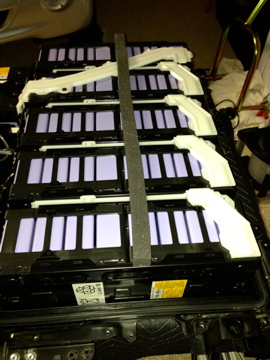RobertC
Well-known member
All i-MiEVs have the Traction Battery Fan for cooling (something not found in the Nissan Leaf). With the Quick Charge Option, the i-MiEV battery pack also draws cold air from the air conditioning unit.Don said:I'm guessing this fan is one of several differences between CHAdeMO equipped cars and all others?
From Mitsubishi Motors website:
"The custom-made battery pack on the ES trim of the i-MiEV features a fan-driven, forced-air induction system that automatically engages to protect the battery from overheating during charging. Drivers can upgrade to the Premium Package, which also gives drivers the ability to charge the i-MiEV using public quick chargers. Because quick-chargers can tend to heat batteries and reduce their efficiency in the long term, we've added an air-cooling system that draws cold air from the air conditioning unit to keep the battery nice and cool, even in hot climates."

